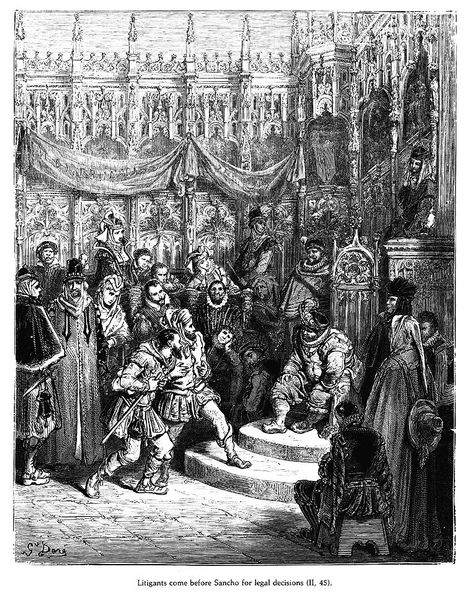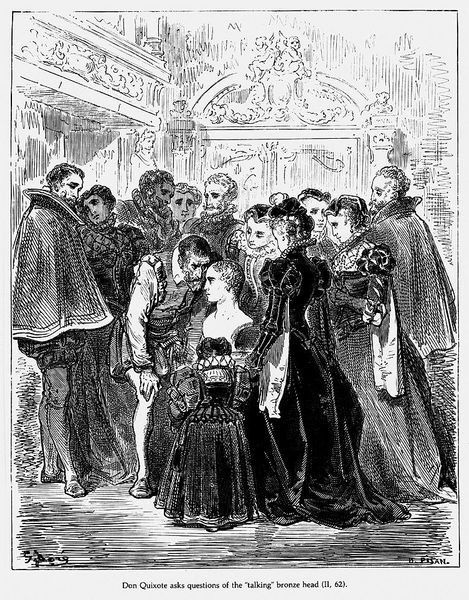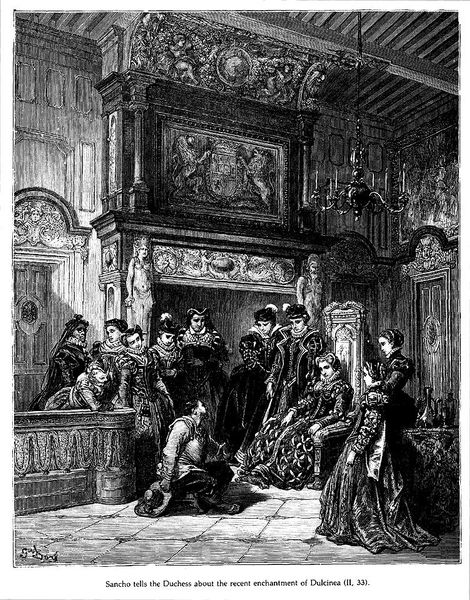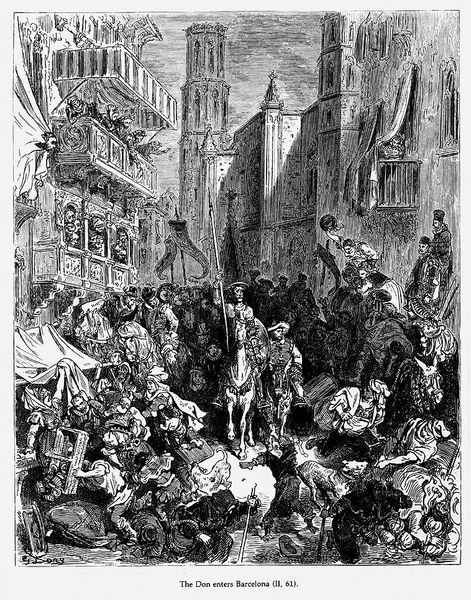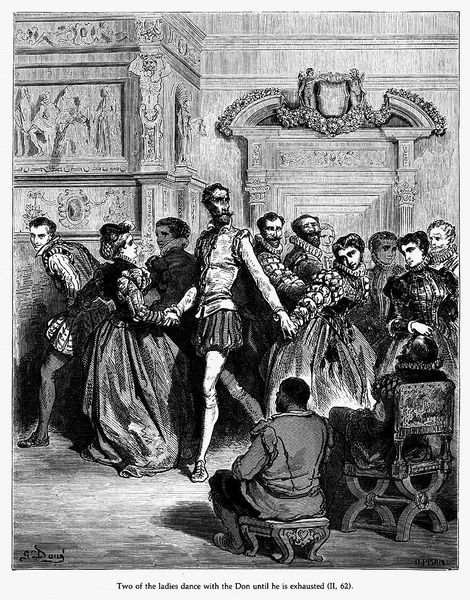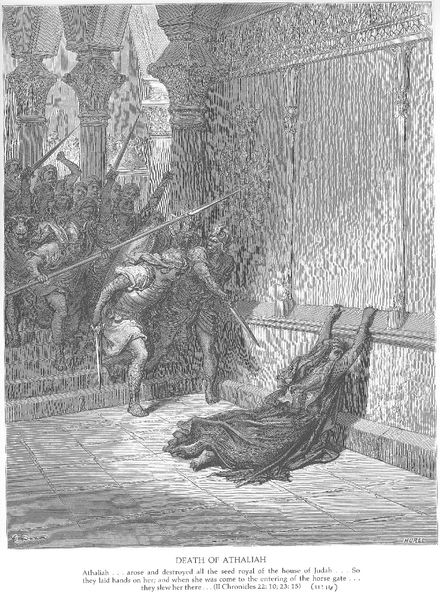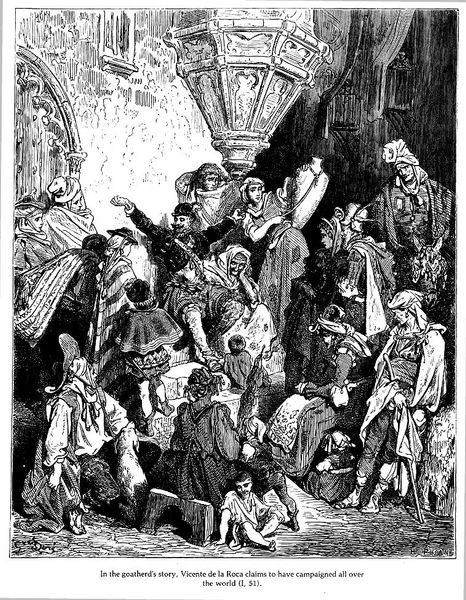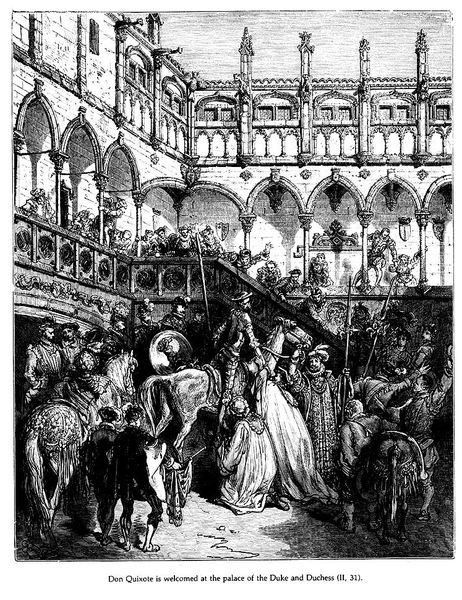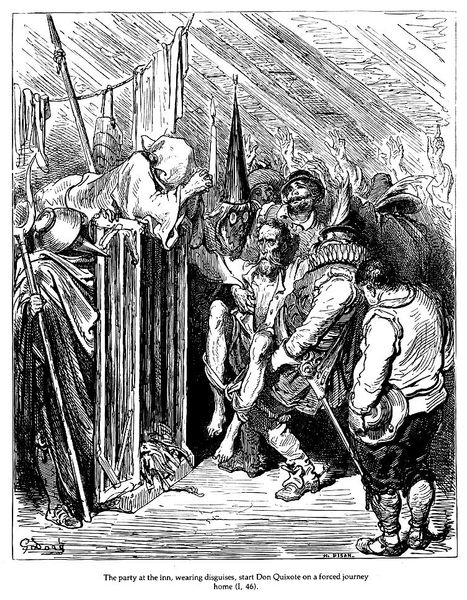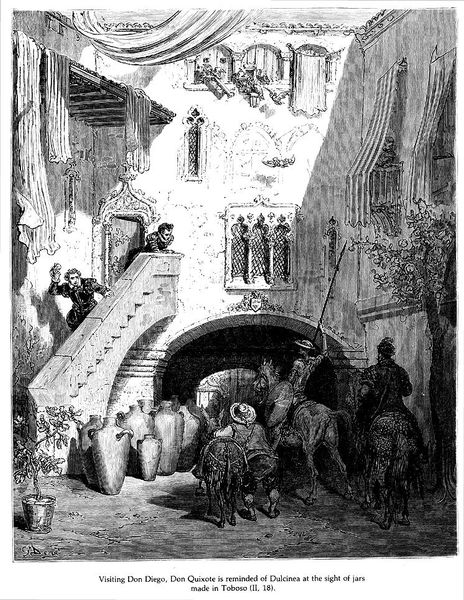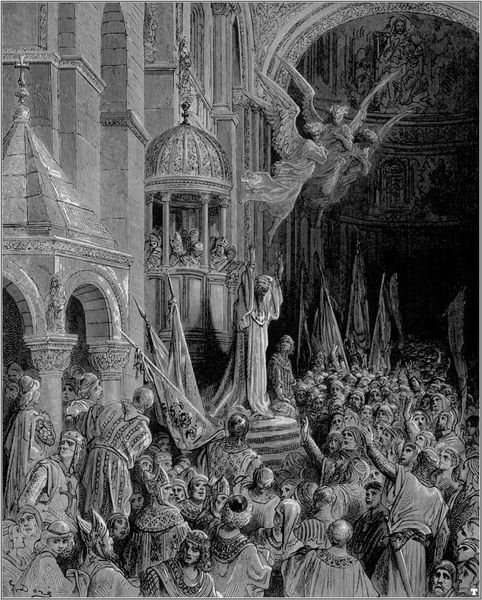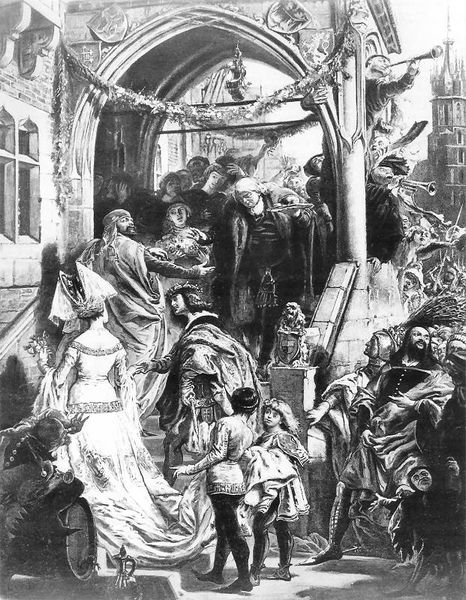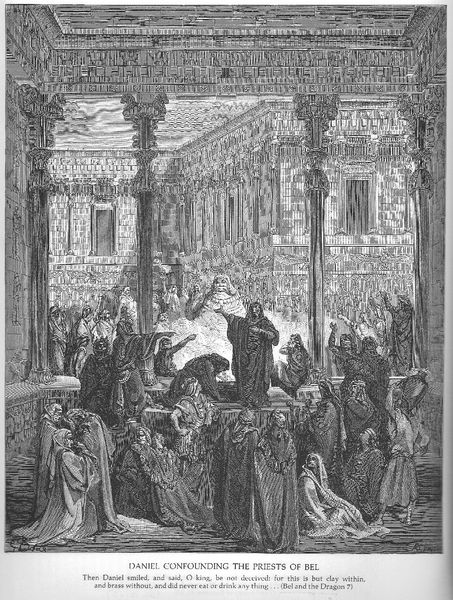
Copyright: Public domain
Curator: Gustave Doré’s print, "The Children's Crusade in 1212," made in 1877, is quite striking. It depicts this ill-fated historical event, showing the masses of children as they embark. Editor: My first impression is just how densely packed it is. All these faces, these hopeful upturned faces, and the stark contrast really enhances the drama, almost to a breaking point. The composition teeters. Curator: Doré was known for these incredibly detailed, dramatic scenes. He was producing a lot of work for publications and trying to visually interpret great historical events. Consider what an engraving like this represents in terms of democratizing images and knowledge, circulating information. Editor: Right, the process is everything. The lines, so carefully etched, create depth. It's a reproduction, so many people can own this image of a very questionable social phenomena. But to make something like this would involve huge amounts of labor from lots of different people; the engraver, the printer and the publisher. The lines give everything a rough feel, a very real human process behind something portraying almost unreal levels of devotion. Curator: And consider how it frames the Crusade. It isn’t glorifying it, is it? There’s something almost disturbing in the wide-eyed faith. Look at the expressions of the women in the balconies above the throng—there's a knowing, cynical watchfulness in many of those expressions. It challenges what history remembers or even wants to see about blind faith. Editor: Agreed. There's so much texture rendered. Their clothing appears coarse, practical for walking, and then you have religious artifacts being carried, almost weaponized. It underscores this complex interplay between material deprivation, production of devotion and… well, doom. Curator: Doom, exactly. And Doré channels all of that complexity into an image that's meant to inform and even perhaps warn. Looking at the artist's historical context, this image comments on social anxieties—a reminder perhaps that collective passions, if not carefully examined, can lead to destruction. Editor: It makes you wonder who buys or sees it at the time and if it changes anything to see such blind fervor immortalized through reproducible media. Something about witnessing this really highlights all the resources consumed by belief. Curator: Absolutely. It speaks volumes about the past while quietly commenting on its present. Editor: A grim, vital commentary, rendered materially interesting!
Comments
No comments
Be the first to comment and join the conversation on the ultimate creative platform.
